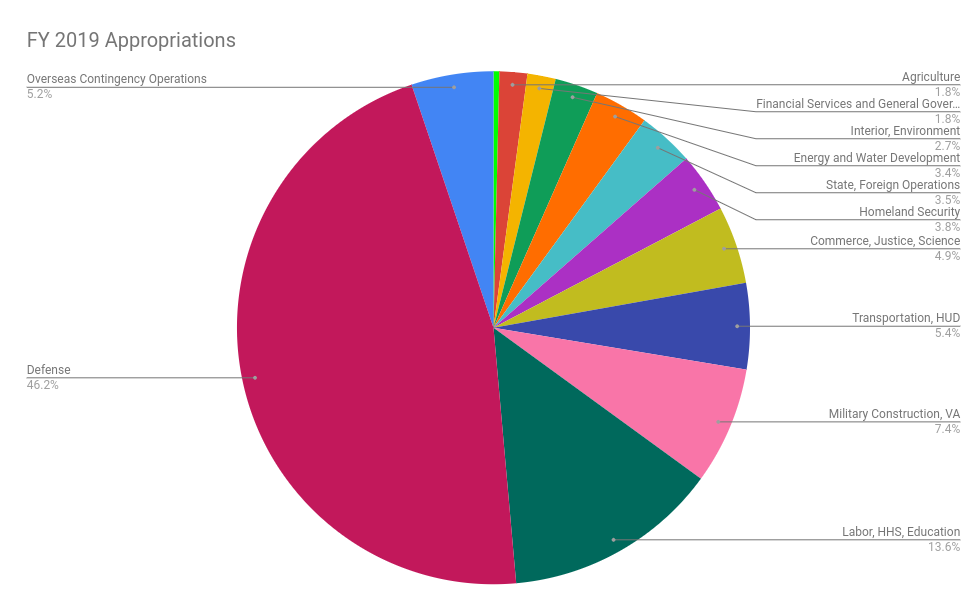According to the Architect of the Capitol, it will take several billion dollars to keep the Congress from literally falling apart. This, and much more, was the subject of four legislative branch appropriations hearings this past week.
It’s not just the physical infrastructure of Congress that’s eroding, the power of the institution has taken a hit over the years with budget cuts. The result has been executive branch overreach as well as cyber security and IT practices falling miles behind best practices.
The legislative branch appropriations subcommittee in charge of doling out the funds that keep the branch functioning has the smallest pot of money to work with in the federal government: last year its funding was only approximately $4.3 billion, with overall federal spending about 1000x greater at $4.3 trillion.
To put this in context, $1.244 trillion was allocated to the 12 appropriations committees for FY 2019. The amount for the legislative branch is so small you can’t see it on the chart — it’s the bright green sliver. Here’s the amounts from least to greatest: Legislative Branch ($4.8b), Agriculture ($23b), Financial Services ($23b), Interior & Environment ($35.6b), Energy & Water ($44.6b), State & Foreign Ops ($46.2b), Homeland Security ($49.4b), Commerce & Science & Justice ($64.1b), Transportation & HUD ($71.1b), Military Construction & VA ($97.1b), Labor & HHS & Education ($178.1b), Defense ($606.5b). (There’s an additional $77b for “Overseas Contingent Operations,” of which $67.9b went to Defense.)
 Continue reading “The Congress’s Edifice Problem” →
Continue reading “The Congress’s Edifice Problem” →
